Shuai Xiao
TimePro: Efficient Multivariate Long-term Time Series Forecasting with Variable- and Time-Aware Hyper-state
May 27, 2025Abstract:In long-term time series forecasting, different variables often influence the target variable over distinct time intervals, a challenge known as the multi-delay issue. Traditional models typically process all variables or time points uniformly, which limits their ability to capture complex variable relationships and obtain non-trivial time representations. To address this issue, we propose TimePro, an innovative Mamba-based model that constructs variate- and time-aware hyper-states. Unlike conventional approaches that merely transfer plain states across variable or time dimensions, TimePro preserves the fine-grained temporal features of each variate token and adaptively selects the focused time points to tune the plain state. The reconstructed hyper-state can perceive both variable relationships and salient temporal information, which helps the model make accurate forecasting. In experiments, TimePro performs competitively on eight real-world long-term forecasting benchmarks with satisfactory linear complexity. Code is available at https://github.com/xwmaxwma/TimePro.
MMKB-RAG: A Multi-Modal Knowledge-Based Retrieval-Augmented Generation Framework
Apr 15, 2025Abstract:Recent advancements in large language models (LLMs) and multi-modal LLMs have been remarkable. However, these models still rely solely on their parametric knowledge, which limits their ability to generate up-to-date information and increases the risk of producing erroneous content. Retrieval-Augmented Generation (RAG) partially mitigates these challenges by incorporating external data sources, yet the reliance on databases and retrieval systems can introduce irrelevant or inaccurate documents, ultimately undermining both performance and reasoning quality. In this paper, we propose Multi-Modal Knowledge-Based Retrieval-Augmented Generation (MMKB-RAG), a novel multi-modal RAG framework that leverages the inherent knowledge boundaries of models to dynamically generate semantic tags for the retrieval process. This strategy enables the joint filtering of retrieved documents, retaining only the most relevant and accurate references. Extensive experiments on knowledge-based visual question-answering tasks demonstrate the efficacy of our approach: on the E-VQA dataset, our method improves performance by +4.2% on the Single-Hop subset and +0.4% on the full dataset, while on the InfoSeek dataset, it achieves gains of +7.8% on the Unseen-Q subset, +8.2% on the Unseen-E subset, and +8.1% on the full dataset. These results highlight significant enhancements in both accuracy and robustness over the current state-of-the-art MLLM and RAG frameworks.
Squeeze Out Tokens from Sample for Finer-Grained Data Governance
Mar 18, 2025Abstract:Widely observed data scaling laws, in which error falls off as a power of the training size, demonstrate the diminishing returns of unselective data expansion. Hence, data governance is proposed to downsize datasets through pruning non-informative samples. Yet, isolating the impact of a specific sample on overall model performance is challenging, due to the vast computation required for tryout all sample combinations. Current data governors circumvent this complexity by estimating sample contributions through heuristic-derived scalar scores, thereby discarding low-value ones. Despite thorough sample sieving, retained samples contain substantial undesired tokens intrinsically, underscoring the potential for further compression and purification. In this work, we upgrade data governance from a 'sieving' approach to a 'juicing' one. Instead of scanning for least-flawed samples, our dual-branch DataJuicer applies finer-grained intra-sample governance. It squeezes out informative tokens and boosts image-text alignments. Specifically, the vision branch retains salient image patches and extracts relevant object classes, while the text branch incorporates these classes to enhance captions. Consequently, DataJuicer yields more refined datasets through finer-grained governance. Extensive experiments across datasets demonstrate that DataJuicer significantly outperforms existing DataSieve in image-text retrieval, classification, and dense visual reasoning.
Contrast-Unity for Partially-Supervised Temporal Sentence Grounding
Feb 18, 2025Abstract:Temporal sentence grounding aims to detect event timestamps described by the natural language query from given untrimmed videos. The existing fully-supervised setting achieves great results but requires expensive annotation costs; while the weakly-supervised setting adopts cheap labels but performs poorly. To pursue high performance with less annotation costs, this paper introduces an intermediate partially-supervised setting, i.e., only short-clip is available during training. To make full use of partial labels, we specially design one contrast-unity framework, with the two-stage goal of implicit-explicit progressive grounding. In the implicit stage, we align event-query representations at fine granularity using comprehensive quadruple contrastive learning: event-query gather, event-background separation, intra-cluster compactness and inter-cluster separability. Then, high-quality representations bring acceptable grounding pseudo-labels. In the explicit stage, to explicitly optimize grounding objectives, we train one fully-supervised model using obtained pseudo-labels for grounding refinement and denoising. Extensive experiments and thoroughly ablations on Charades-STA and ActivityNet Captions demonstrate the significance of partial supervision, as well as our superior performance.
Advancing Myopia To Holism: Fully Contrastive Language-Image Pre-training
Nov 30, 2024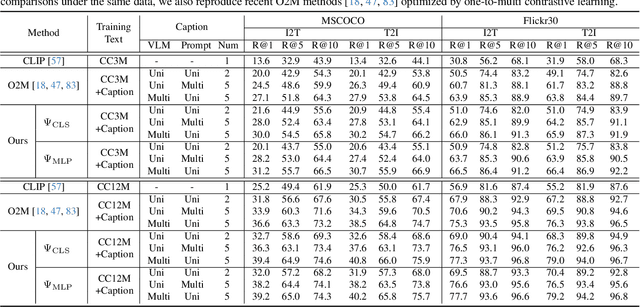
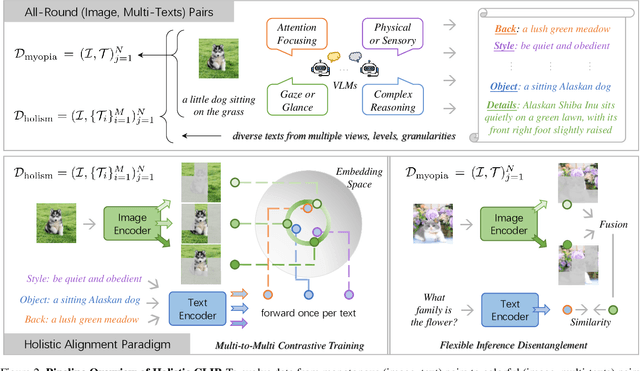
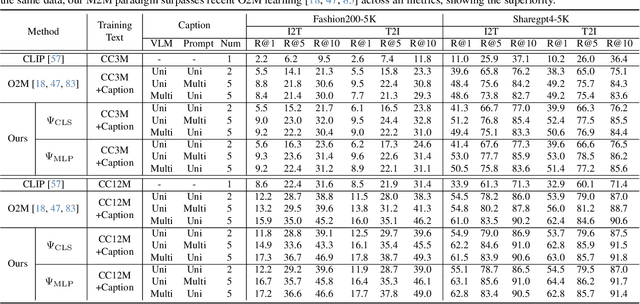
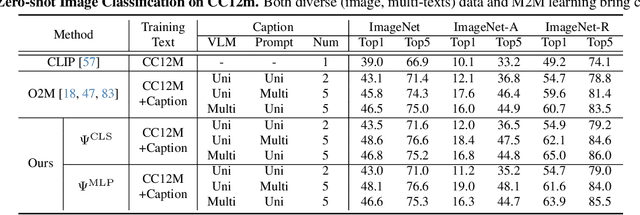
Abstract:In rapidly evolving field of vision-language models (VLMs), contrastive language-image pre-training (CLIP) has made significant strides, becoming foundation for various downstream tasks. However, relying on one-to-one (image, text) contrastive paradigm to learn alignment from large-scale messy web data, CLIP faces a serious myopic dilemma, resulting in biases towards monotonous short texts and shallow visual expressivity. To overcome these issues, this paper advances CLIP into one novel holistic paradigm, by updating both diverse data and alignment optimization. To obtain colorful data with low cost, we use image-to-text captioning to generate multi-texts for each image, from multiple perspectives, granularities, and hierarchies. Two gadgets are proposed to encourage textual diversity. To match such (image, multi-texts) pairs, we modify the CLIP image encoder into multi-branch, and propose multi-to-multi contrastive optimization for image-text part-to-part matching. As a result, diverse visual embeddings are learned for each image, bringing good interpretability and generalization. Extensive experiments and ablations across over ten benchmarks indicate that our holistic CLIP significantly outperforms existing myopic CLIP, including image-text retrieval, open-vocabulary classification, and dense visual tasks.
Branches, Assemble! Multi-Branch Cooperation Network for Large-Scale Click-Through Rate Prediction at Taobao
Nov 20, 2024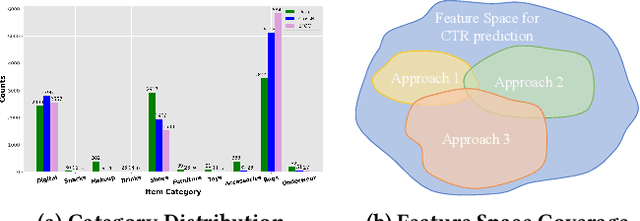
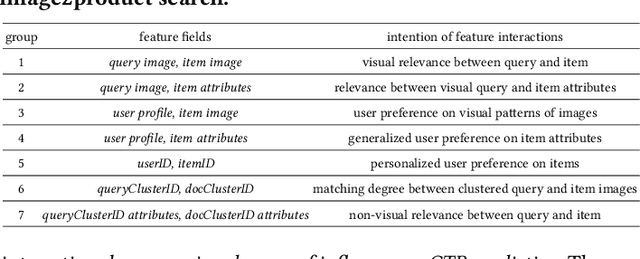
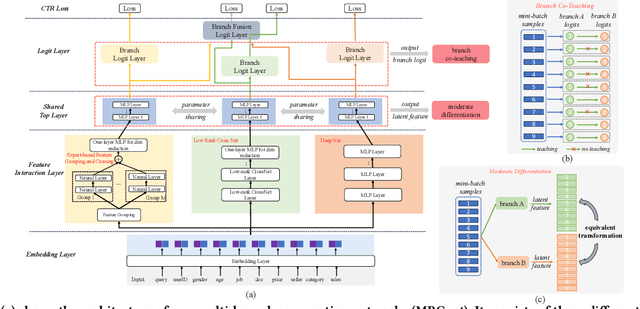

Abstract:Existing click-through rate (CTR) prediction works have studied the role of feature interaction through a variety of techniques. Each interaction technique exhibits its own strength, and solely using one type could constrain the model's capability to capture the complex feature relationships, especially for industrial large-scale data with enormous users and items. Recent research shows that effective CTR models often combine an MLP network with a dedicated feature interaction network in a two-parallel structure. However, the interplay and cooperative dynamics between different streams or branches remain under-researched. In this work, we introduce a novel Multi-Branch Cooperation Network (MBCnet) which enables multiple branch networks to collaborate with each other for better complex feature interaction modeling. Specifically, MBCnet consists of three branches: the Expert-based Feature Grouping and Crossing (EFGC) branch that promotes the model's memorization ability of specific feature fields, the low rank Cross Net branch and Deep branch to enhance both explicit and implicit feature crossing for improved generalization. Among branches, a novel cooperation scheme is proposed based on two principles: branch co-teaching and moderate differentiation. Branch co-teaching encourages well-learned branches to support poorly-learned ones on specific training samples. Moderate differentiation advocates branches to maintain a reasonable level of difference in their feature representations. The cooperation strategy improves learning through mutual knowledge sharing via co-teaching and boosts the discovery of diverse feature interactions across branches. Extensive experiments on large-scale industrial datasets and online A/B test demonstrate MBCnet's superior performance, delivering a 0.09 point increase in CTR, 1.49% growth in deals, and 1.62% rise in GMV. Core codes will be released soon.
DivNet: Diversity-Aware Self-Correcting Sequential Recommendation Networks
Nov 01, 2024

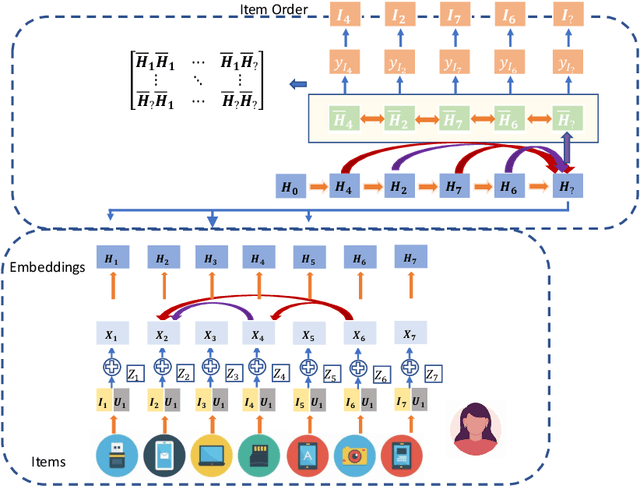
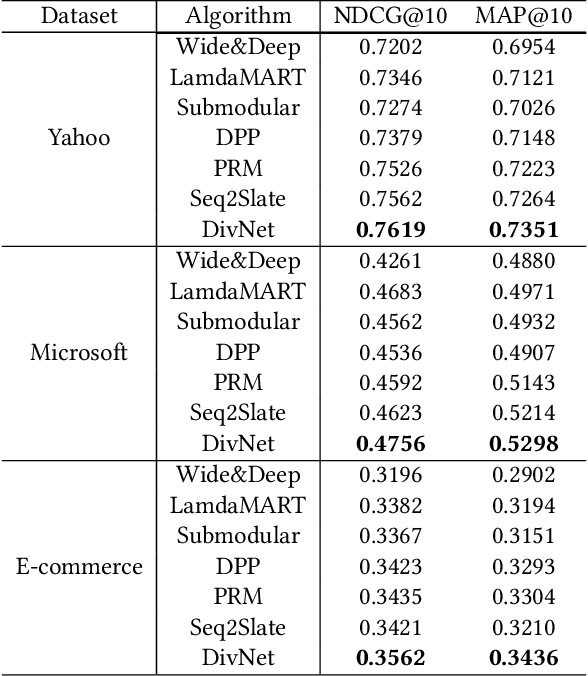
Abstract:As the last stage of a typical \textit{recommendation system}, \textit{collective recommendation} aims to give the final touches to the recommended items and their layout so as to optimize overall objectives such as diversity and whole-page relevance. In practice, however, the interaction dynamics among the recommended items, their visual appearances and meta-data such as specifications are often too complex to be captured by experts' heuristics or simple models. To address this issue, we propose a \textit{\underline{div}ersity-aware self-correcting sequential recommendation \underline{net}works} (\textit{DivNet}) that is able to estimate utility by capturing the complex interactions among sequential items and diversify recommendations simultaneously. Experiments on both offline and online settings demonstrate that \textit{DivNet} can achieve better results compared to baselines with or without collective recommendations.
Pseudo Label Refinery for Unsupervised Domain Adaptation on Cross-dataset 3D Object Detection
Apr 30, 2024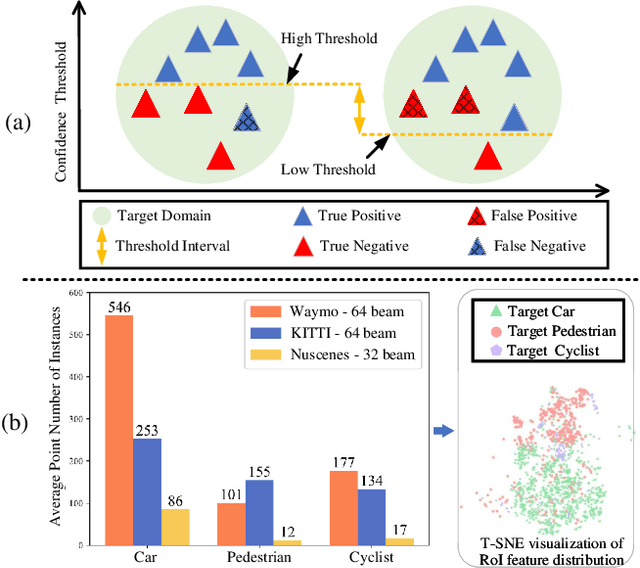
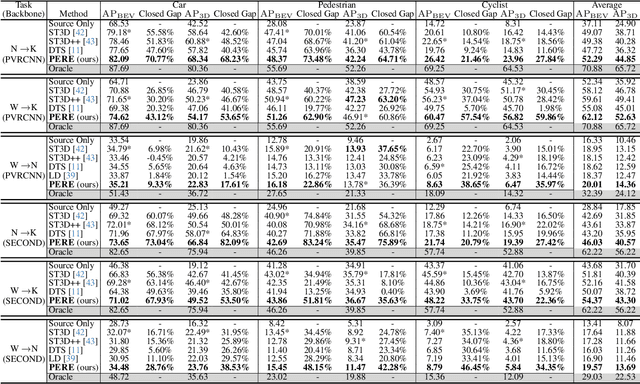
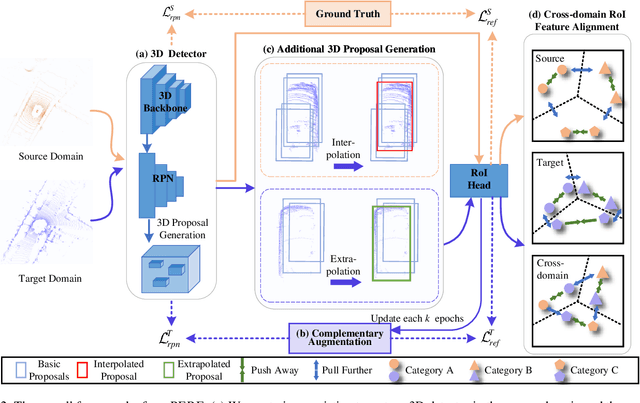

Abstract:Recent self-training techniques have shown notable improvements in unsupervised domain adaptation for 3D object detection (3D UDA). These techniques typically select pseudo labels, i.e., 3D boxes, to supervise models for the target domain. However, this selection process inevitably introduces unreliable 3D boxes, in which 3D points cannot be definitively assigned as foreground or background. Previous techniques mitigate this by reweighting these boxes as pseudo labels, but these boxes can still poison the training process. To resolve this problem, in this paper, we propose a novel pseudo label refinery framework. Specifically, in the selection process, to improve the reliability of pseudo boxes, we propose a complementary augmentation strategy. This strategy involves either removing all points within an unreliable box or replacing it with a high-confidence box. Moreover, the point numbers of instances in high-beam datasets are considerably higher than those in low-beam datasets, also degrading the quality of pseudo labels during the training process. We alleviate this issue by generating additional proposals and aligning RoI features across different domains. Experimental results demonstrate that our method effectively enhances the quality of pseudo labels and consistently surpasses the state-of-the-art methods on six autonomous driving benchmarks. Code will be available at https://github.com/Zhanwei-Z/PERE.
Tunnel Try-on: Excavating Spatial-temporal Tunnels for High-quality Virtual Try-on in Videos
Apr 26, 2024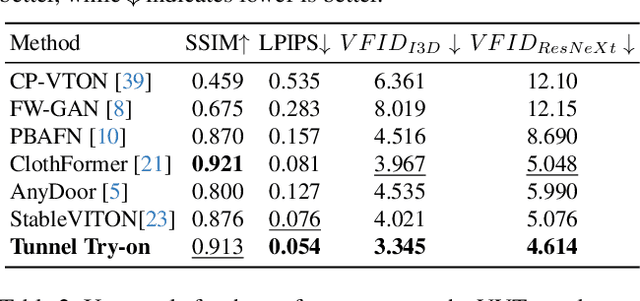
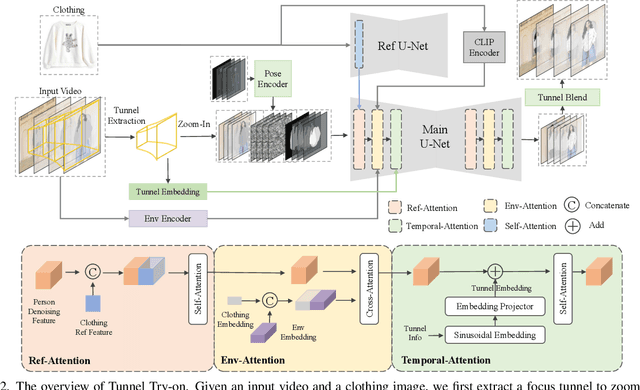
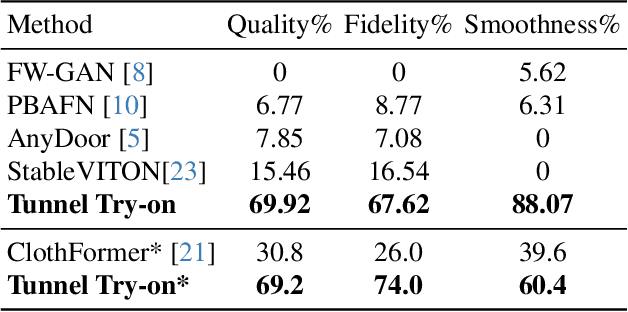
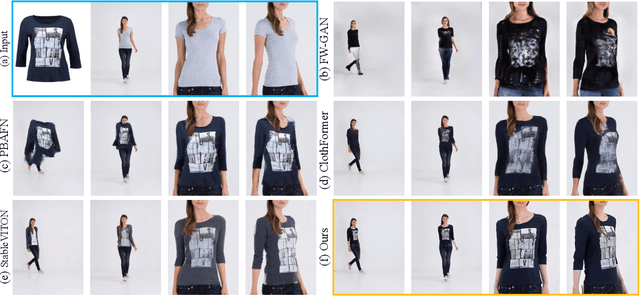
Abstract:Video try-on is a challenging task and has not been well tackled in previous works. The main obstacle lies in preserving the details of the clothing and modeling the coherent motions simultaneously. Faced with those difficulties, we address video try-on by proposing a diffusion-based framework named "Tunnel Try-on." The core idea is excavating a "focus tunnel" in the input video that gives close-up shots around the clothing regions. We zoom in on the region in the tunnel to better preserve the fine details of the clothing. To generate coherent motions, we first leverage the Kalman filter to construct smooth crops in the focus tunnel and inject the position embedding of the tunnel into attention layers to improve the continuity of the generated videos. In addition, we develop an environment encoder to extract the context information outside the tunnels as supplementary cues. Equipped with these techniques, Tunnel Try-on keeps the fine details of the clothing and synthesizes stable and smooth videos. Demonstrating significant advancements, Tunnel Try-on could be regarded as the first attempt toward the commercial-level application of virtual try-on in videos.
Cell Variational Information Bottleneck Network
Mar 29, 2024
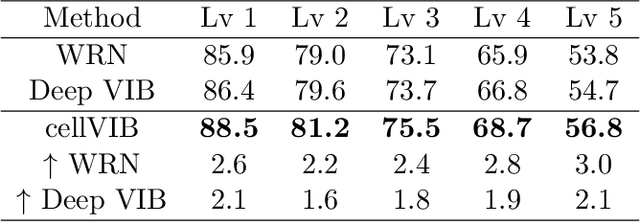


Abstract:In this work, we propose Cell Variational Information Bottleneck Network (cellVIB), a convolutional neural network using information bottleneck mechanism, which can be combined with the latest feedforward network architecture in an end-to-end training method. Our Cell Variational Information Bottleneck Network is constructed by stacking VIB cells, which generate feature maps with uncertainty. As layers going deeper, the regularization effect will gradually increase, instead of directly adding excessive regular constraints to the output layer of the model as in Deep VIB. Under each VIB cell, the feedforward process learns an independent mean term and an standard deviation term, and predicts the Gaussian distribution based on them. The feedback process is based on reparameterization trick for effective training. This work performs an extensive analysis on MNIST dataset to verify the effectiveness of each VIB cells, and provides an insightful analysis on how the VIB cells affect mutual information. Experiments conducted on CIFAR-10 also prove that our cellVIB is robust against noisy labels during training and against corrupted images during testing. Then, we validate our method on PACS dataset, whose results show that the VIB cells can significantly improve the generalization performance of the basic model. Finally, in a more complex representation learning task, face recognition, our network structure has also achieved very competitive results.
 Add to Chrome
Add to Chrome Add to Firefox
Add to Firefox Add to Edge
Add to Edge